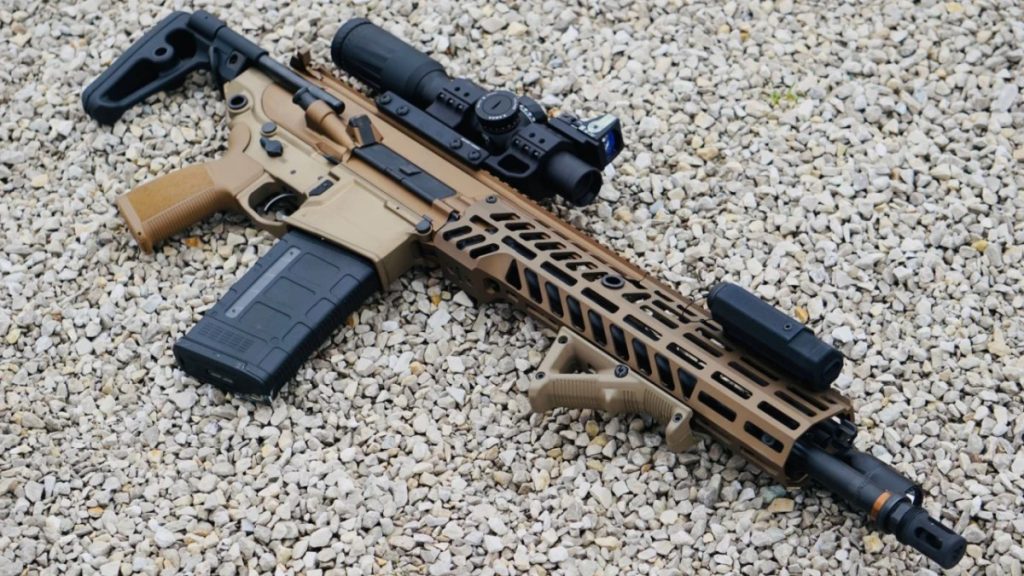
The most startling news in American small arms policy for decades is the U.S. Army’s switch from the tested-and-proven M4A1 carbine to the new XM7 rifle. To fight soldiers, the gun in their hands is no toy—life is a lifeline, morale is a booster, and probable mission success or crisis in the balance. So when a new gun is on the table, the stakes are enormous, and so are expectations.

The M16, for the first time during the Vietnam War, revolutionized its time. Light and having a 5.56mm barrel, it allowed soldiers to fire fast and carry more ammunition, which proved helpful in jungles and cities as well. The M16, over time, became the M4 carbine, the standard infantry rifle of the US Army. Its modularity and versatility were what worked in its favor for modern warfare, particularly close combat.

But once enemies started to use longer and longer ranges of guns and more and more advanced body armor, the limitations of the 5.56mm round became increasingly obvious. The Army required greater stopping power, greater penetration, and more range.

This requirement led to the Next Generation Squad Weapon (NGSW) program. The Sig Sauer XM7 features a new 6.8x51mm round that penetrates current body armor and offers enhanced ballistic performance. The rifle itself employs a gas piston operating system for increased reliability, ambidextrous controls, and modularity. With the addition of the XM157 Fire Control system, the troops now have a digital optic with ballistic calculation, rangefinding, etc., far superior to conventional sights.

But as with all bodybuilding regimens, things have gone less than smoothly on the floor. Army Capt. Braden Trent, who himself tested the XM7 by ordering up more than 150 troops and firing 101st Airborne Division weapons, had some legitimate complaints. He contended that the XM7 experienced excessive barrel wear at a thousand or so rounds, that weak components would disintegrate, and that magazines were diminutive, holding soldiers out of ammunition too soon when actually firing live ammunition.

In fact, his testing resulted in his finding that when testing, a platoon was out of ammo in a matter of minutes, seriously limiting its ability to employ suppressive fire. The rifle’s weight and larger-caliber ammo also add to the overall weight soldiers have to bear, putting strain on already physically demanding conditions.

Trent also had technical issues, including rifling gouging in the barrel, snapping feel charging handle, and an ambidextrous magazine release that would click involuntarily under body armor. Even the suppressor lock ring was brittle, and this possibly led to catastrophic failure. These complaints created the image of a weapon that was far from being capable of catching up with combat reality in the trenches.

The government and Sig Sauer vehemently refute that. Company executives claim that XM7 exceeded testing boundaries, barrels with tens of thousands of rounds shot before accuracy falls off. They also claim that design improvements have resolved issues with the magazine release, charging handle, and suppressor interface.

At the cartridge end, hybrid metal case ammo is being introduced in a bid to reduce soldier load, with polymer-case ammo in development to further reduce load, though those have technical and logistically daunting hurdles as well. Officially, the Army claims the NGSW program delivers unmatched lethality to close fight infantry.

The new digital fire control and optics are intended to provide first-shot hit probability and increase reach. It leaps to the 6.8mm round only as a means of providing overmatch against better-armored and longer-ranged adversaries, and even impacts allied troops in the future, hopefully establishing the future standard for small arms ammo and spurring related innovation in body armor. The transition is not quite seamless by any measure, and with every new platform, there are pains.

Troop feedback continues to drive enhancements, but it remains unknown if the XM7 will eventually supplant the M4A1 as the U.S. rifleman’s rifle of choice. What is certain: this debate smolders much deeper than issues of technicalities—it wishes to know what troops are laying down their lives for in combat, and the decision will set the precedent for decades of small arms to come.


